Assessing the Availability of Global Metals and Minerals for the Sustainable Century: From Aluminium to Zirconium
Abstract
:1. Background: Metallic and Mineral Needs for Society
“But even in our modern world, with its diverse sources of foods and textile materials, man’s unit consumptive capacity for these products does not greatly change from one year to another. On the other hand, his consumption of metals grows with the increasing complexity of civilization and it seems now as if his appetite would never be satisfied”.(page 67, Hewett, 1929).
2. Approach and Methodology
- Lithium—global mine production synthesized from [21].
3. Results: Key Trends in Global Reserves and Mine Production
4. Results: Key Trends in Australia’s Resources and Mining
- Gold—by the 1970s the gold sector in Australia was a distant shadow of its glory days from the 1850s to the 1910s (the ‘gold rush’ era), hence the cumulative production appears somewhat flat in the 1950s–60s with negligible economic resources. The strong and continuing rise in the gold price in the 1970s combined with new cyanide-based process technology (namely carbon-in-pulp, carbon-in-leach) led to a resurgence in gold mining allowed to Australia to triple its cumulative production between 1975 to 2020, with as much gold still known in economic and sub-economic resources. Gold is the classic case study of the intersection of exploration, market prices and technology combining to facilitate a mining boom.
- Iron Ore—Australia is now the world’s largest miner of iron ore, with almost all exported. This is based almost entirely on the Pilbara region of northern Western Australia, where vast mineral deposits occur. The industrialisation of China led to a boom in iron ore prices and mine development in the 2000s, which coincides with exploration adding substantial quantities of economic and sub-economic resources. Iron ore is a case of strong markets driving exploration and mine development. Indeed, it is hard to believe that Australia banned iron ore exports in 1938 to protect its own industrial development given the vast scale of its iron ore sector in 2020.
- Lead-Zinc-Silver—Australia has a long history in lead-zinc-silver mining, whereby the Broken Hill field in western New South Wales gave rise to mining giant BHP Group Ltd. and was instrumental in a large part of Rio Tinto’s corporate history. All three metals show continuing increases over time in cumulative production, economic and sub-economic resources. This is influenced by major new discoveries (e.g., Century, Cannington, McArthur River) as well as brownfields expansion of operating mines (e.g., Broken Hill, Mount Isa, Rosebery). There have been no new major discoveries since Century and Cannington (both 1990), leaving current resources as driving the future of the sector for the foreseeable future. It should be noted that the giant McArthur River zinc project took four decades to develop due to the fine-grained nature of the mineralisation, meaning new grinding and process technology had to be invented first, highlighting the role of technology in facilitating new mining projects.
- Copper—although Australia has a long history of copper mining back to the 1840s, it is only since the 1950s and especially the 1990s that production has grown to be globally significant. This is mainly the result of exploration and the discovery and development of numerous major deposits (e.g., Mount Isa, Olympic Dam, Ernest Henry, Northparkes, Prominent Hill), as well as important contributions from gold-copper deposits (e.g., Cadia, Boddington, Telfer). It should be noted that Australia’s copper resources are dominated by Olympic Dam, which contains 77.7 out of 140.7 Mt Cu of national resources. Olympic Dam also contains gold, silver, uranium, rare earths, cobalt and tellurium, although to date only copper, gold, silver and uranium have been extracted (despite the high value of rare earths and growing need for cobalt and tellurium).
- Heavy Mineral Sands—the minerals rutile, ilmenite and zircon are all extracted from heavy mineral sands. Despite concerns in the 1970s about the lack of new discoveries, depletion of some fields (e.g., coastal New South Wales) and some major deposits being excluded from development for environmental protection (e.g., Fraser Island), a range of new deposits and provinces have since been discovered from the mid-1980s (e.g., Murray, Eucla and Gippsland Basins). These discoveries have facilitated continuing growth in cumulative production, economic and sub-economic resources, highlighting the crucial role of exploration.
- Critical and Other Metals and Minerals—despite substantial resources, Australia typically has not been a significant producer of most critical metals (e.g., gallium, tellurium, niobium) due to the lack of such process circuits at the few smelters and refineries across Australia (e.g., both zinc refineries have no process circuits for indium, gallium, germanium). Australia has produced tungsten, tantalum and antimony, with significant resources but these sectors often face difficult markets and economics (e.g., Chinese market power). The abundant resources (e.g., vanadium, molybdenum, rare earths) demonstrate that there is significant potential but the challenges remain market conditions as well as mine economics, technical issues (e.g., viable processing routes) and addressing environmental and social concerns (e.g., radioactive waste issues from the thorium and uranium involved in rare earth mining).
- Diamonds—diamonds are the only mineral which shows a classic depletion pattern. That is, the cumulative production rises and then plateaus with minimal resources remaining. This finding is simply due to the sheer dominance of the former Argyle diamond mine, which operated from 1983 to 2020 and produced 903.2 million carats (Australia’s cumulative production to 2020 was 911.4 million carats). There have been no significant diamond deposits discovered recently, meaning no new diamond mines, with the projects in care and maintenance unlikely to re-open due to poor economics (namely Merlin, Ellendale).
- Tungsten—the somewhat flat cumulative production curve might suggest depletion of Australia’s tungsten resources, although there are still significant economic and sub-economic resources (some 15 times cumulative production). Currently, the global tungsten market is almost monopolised by China (69 of 84 kt W in 2020; 2021 Edition, [24]), making it extremely difficult for other mines to compete, reinforcing the criticality of tungsten and the role of markets.
- Nickel—Australia is major global producer, showing continuing growth in cumulative production and economic and sub-economic resources. There have been important new discoveries of nickel deposits, such as Cosmos, Spotted Quoll, Nova-Bollinger and Julimar, highlighting that exploration is still able to discover additional nickel. The great challenge for Australia, however, is that 70.5% of its nickel is found in laterite-type deposits, which are more difficult to process [11]. There have been several nickel laterite projects developed in Australia, with the majority failing to achieve technical and financial success. The only operating project at present, Murrin Murrin, uses high pressure acid leach (HPAL) process technology, allowing the production of nickel metal directly as well as cobalt metal as a by-product.
- Cobalt—Australia produces cobalt exclusively as a co/by-product mostly from nickel mines and a minor amount from zinc refineries. The vast majority of currently reported cobalt resources are similarly found in nickel deposits, with significant amounts also found in some copper deposits. There are deposits where cobalt is also found but is not formally reported in resources (e.g., Olympic Dam). There are only two deposits where cobalt is the primary commodity (e.g., Thackaringa-Railway Hill, Mount Oxide cobalt-only lode). All of this means that although Australia is almost as well endowed with cobalt as the Democratic Republic of the Congo (the world’s largest producer; [11,48]), production remains subservient to a primary metal such as nickel or potentially copper.
5. Lithium Case Study
6. Discussion
- Mine Waste—modern mining is facing declining ore grades and increasing tailings and waste rock, especially on a per metal/mineral basis combined with ever larger project scales [46,56]. (This is placing a continuously increasing burden of managing such mine wastes on companies, governments and local communities. Mine waste management needs to address physical stability to avoid catastrophic failures (such as tailings dam failures), erosion, land use impacts, acid and metalliferous drainage (aka acid mine drainage or ‘AMD’), water resource impacts (including surface water-groundwater interactions), water quality risks and greater rehabilitation efforts let alone social impacts and long-term economic liabilities [56].
- Mine Rehabilitation—after a mine closes there are normally requirements (let alone community expectations and industry promises) for some form of site rehabilitation, with the extent varying according to jurisdictional requirements. The primary points of focus are on making a former mine suitable for future land use (such as agriculture, tourism, conservation, heritage, etc) and ensuring ecological, physical, chemical and sometimes radiological stability and minimising or preventing any residual economic liability. Although some mines may practice progressive rehabilitation during operations, most of the major works are left for closure. There are rarely long-term follow-up studies on the success (or otherwise) of mine rehabilitation, whereby monitoring was maintained for at least a decade and key success criteria have been met (e.g., ecological condition, acid and metalliferous drainage, erosion, biodiversity, etc). There are examples from around the world where mine rehabilitation has not been successful, ranging from modest to extreme failure. In Australia, significant failures include Rum Jungle, Brukunga and Mary Kathleen, with modest failures at Nabarlek, Kidston, Tabletop and many others. Unfortunately, it is rare that environmental monitoring is continued for more than a few years, meaning that the ability to properly assess the success or failure of mine rehabilitation is extremely limited. This raises questions of credibility on industry and government claims about successful rehabilitation, a concern often deeply echoed by communities facing existing, expanding or new mining projects.
- Energy-Climate Change Nexus—it takes a considerable amount of energy to mine various metals and minerals, increasing on a per metal/mineral basis as ore grades decline (e.g., [57,58,59]). Given that ore grades are in gradual decline globally (with few exceptions), this means that the supply of metals and minerals will need ever more energy. In some parts of the world there are large investments to build renewable energy systems to supply the electricity required (which is typically used in the process plant and underground mining), such as large scale solar photovoltaic farms in Chile or combined wind-solar-battery systems at the Agnew gold mine in Western Australia. There are also innovative new developments emerging to fully electrify mining machinery (e.g., Borden gold mine, Ontario, Canada), thereby removing diesel from mining. Combined, it is critical to understand the amount of energy required in mining but also its carbon cost (e.g., [60])—a nexus which will increasingly be applied to future mining from both a climate, environmental, cost and investment perspective.
- Circular Economy and Recycling—in general, it is less energy-intensive to recycle metals (and sometimes minerals) than primary mining [61], although it is often more expensive (depending on logistics and regulatory settings). In addition, the recycling of metals can provide a reliable or predictable supply, helping to reduce reliance on primary supplies. At present, the extent of recycling for numerous metals remains poor to modest (e.g., copper, aluminium, iron, zinc), with only lead arguably approaching a ‘circular economy’ [62,63]. It is also important to recognise that some uses of metals or minerals have long residence times whilst others have very short in-use lives. For example, iron used in steel in multi-story buildings will be in-use for several decades compared to steel used in vehicles which might last between 10 to 20 years before they are recycled, leading to differing availabilities for recycling [63]. Furthermore, it may take some time to build-up stocks of metals in urban systems before sufficient metals could be supplied from recycling—an issue which is certainly a problem for many of the critical metals (e.g., rare earths, indium, lithium). There are an increasing array of policy initiatives around the world to promote a circular economy (e.g., European Union, China, Japan), meaning that it can be expected that a greater share of metals will be supplied from recycling over time (although the details will vary enormously depending on the metal and geographic focus). It should be noted that most minerals are not readily recyclable (based on current uses and recycling technology), such as rutile, manganese concentrate, zircon or phosphate rock, another challenge which remains poorly recognised and assessed in the industrial ecology community.
- Critical Metals and Smelters-Refineries—many of the metals repeatedly assessed as critical are only extracted as small value by-products at smelters and refineries, such as cadmium, tellurium, indium, gallium, germanium, bismuth and rhenium. This is principally due to the fact that they are almost exclusively substitute elements in primary economic minerals (e.g., indium in sphalerite), meaning that where such concentrates are processed to produce the primary metals, there can be sufficient concentrations to warrant extraction of these substitute elements. The implication of this is that to meet rapidly growing demands for these specific metals means continued mining of the primary metals, although complex models and scenarios of these future supply–demand scenarios remain a major gap in the literature. In theory, many of the applications where such metals are used could be recycled (e.g., solar photovoltaic panels), but these technologies are still being adopted, leaving little stocks available for recycling supplies. Australian smelters and refineries are not equipped with the circuits to extract such metals, forcing imports of high value manufactured products instead of primary supply. Globally the issue of downstream processing at smelters and refineries remains a very challenging area in metals supply chains.
- Social and Governance Issues—modern mining is increasingly expected to be able to demonstrate its commitment to improved social outcomes, especially in developing countries. The SDGs are also helping to drive focus on social impacts and benefits, although mining companies can find themselves in the awkward position of providing for development due to the lack of capacity (or failure) of governments to deliver such outcomes. Furthermore, mining in regions of poor governance can increase the risks of severe social impacts, epitomised by ‘conflict minerals’ in central Africa where mining can fund guerrilla warlords, armies and insurrection. There are regions with long histories of mining where significant fractions of these communities are increasingly hostile to existing and/or new mining projects (e.g., Hunter Valley, Australia), as well as regions where communities with no history of mining remain staunchly opposed to mining developments—often driven by understanding of the social and environmental impacts of mining elsewhere (e.g., Ecuador). The concept of ‘social licence to operate’, or perhaps better termed ‘social acceptance to operate’, has evolved in the past decade to explore the ways that communities interact with mines and mining companies [64], though it remains difficult to apply across the vast array of mines around the world. Finally, it must be recognised that failure to recognise and address social issues, especially those linked to governance and approvals processes, can lead to lengthy and costly projects delays, epitomised by failed projects such as Pascua Lama (Argentina/Chile), Pebble (Alaska, USA), New Prosperity and Kemess North (British Columbia, Canada), Conga (Peru) and Reko Diq (Balochistan, Pakistan), amongst many others [40,65].
7. Summary and Conclusions
Funding
Institutional Review Board Statement
Informed Consent Statement
Data Availability Statement
Acknowledgments
Conflicts of Interest
References
- Chin, A.; Fu, R.; Harbor, J.; Taylor, M.P.; Vanacker, V. Anthropocene: Human interactions with earth systems. Anthropocene 2013, 1, 1–2. [Google Scholar] [CrossRef]
- Conceição, P. Human Development Report 2020—The Next Frontier: Human Development and the Anthropocene; United Nations Development Programme (UNDP): New York, NY, USA, 2020. [Google Scholar]
- UNE. Global Environment Outlook–GEO-6: Healthy Planet, Healthy People; United Nations Environment (UNE): Nairobi, Kenya, 2019; 745p. [Google Scholar]
- Gordon, R.B.; Bertram, M.; Graedel, T.E. Metal Stocks and Sustainability. Proc. Natl. Acad. Sci. USA 2006, 103, 1209–1214. [Google Scholar] [CrossRef] [Green Version]
- Northey, S.A.; Mudd, G.M.; Werner, T.T. Unresolved Complexity in Assessments of Mineral Resource Depletion and Avail-ability. Nat. Resour. Res. 2018, 27, 241–255. [Google Scholar] [CrossRef]
- Hewett, D.F. Cycles in Metal Production. Am. Inst. Min. Metall. Eng. Trans. 1929, 85, 65–93. [Google Scholar]
- Hubbert, M.K. Nuclear Energy and the Fossil Fuels. Drill. Prod. Pract. 1956, 95, 1–57. [Google Scholar]
- Inman, M. The Oracle of Oil: A Maverick Geologist’s Quest for a Sustainable Future; W.W. Norton & Company: New York, NY, USA; London, UK, 2016; 428p. [Google Scholar]
- Mudd, G.M.; Jowitt, S.M.; Werner, T.T. The World’s By-Product and Critical Metal Resources Part I: Uncertainties, Current Reporting Practices, Implications and Grounds for Optimism. Ore Geol. Rev. 2017, 86, 924–938. [Google Scholar] [CrossRef]
- Mudd, G.M.; Jowitt, S.M. Growing Global Copper Resources, Reserves and Production: Discovery is not the Only Control on Supply. Econ. Geol. 2018, 113, 1235–1267. [Google Scholar] [CrossRef]
- Mudd, G.M.; Jowitt, S.M. The New Century for Nickel Resources, Reserves and Mining: Reassessing the Sustainability of the Devil’s Metal. Econ. Geol. 2021. [Google Scholar]
- Mudd, G.M.; Jowitt, S.M.; Werner, T.T. The World’s Lead-Zinc Mineral Resources: Scarcity, Data, Issues and Opportunities. Ore Geol. Rev. 2017, 80, 1160–1190. [Google Scholar] [CrossRef]
- Mudd, G.M.; Roche, C.; Northey, S.; Jowitt, S.M.; Gamato, G. Mining in Papua New Guinea: A complex story of trends, impacts and governance. Sci. Total. Environ. 2020, 741, 140375. [Google Scholar] [CrossRef] [PubMed]
- Werner, T.T.; Mudd, G.; Jowitt, S.M. The world’s by-product and critical metal resources part II: A method for quantifying the resources of rarely reported metals. Ore Geol. Rev. 2017, 80, 658–675. [Google Scholar] [CrossRef]
- Werner, T.T.; Mudd, G.M.; Jowitt, S.M. The World’s By-Product and Critical Metal Resources Part III: Indium. Ore Geol. Rev. 2017, 86, 939–956. [Google Scholar] [CrossRef]
- Graedel, T.E.; Harper, E.M.; Nassar, N.T.; Reck, B.K. On the Materials Basis of Modern Society. Proc. Natl. Acad. Sci. USA 2015, 112, 6295–6300. [Google Scholar] [CrossRef] [PubMed] [Green Version]
- Greenfield, A.; Graedel, T. The omnivorous diet of modern technology. Resour. Conserv. Recycl. 2013, 74, 1–7. [Google Scholar] [CrossRef]
- Drexhage, J.; La Porta, D.; Hund, K.; McCormick, M.; Ningthoujam, J. The Growing Role of Minerals and Metals for a Low Carbon Future; World Bank: Washington, DC, USA, 2017; 112p. [Google Scholar]
- IEA. World Energy Outlook 2018; International Energy Agency (IEA): Paris, France, 2018; 661p. [Google Scholar]
- Goodenough, K.M.; Wall, F.; Merriman, D. The Rare Earth Elements: Demand, Global Resources, and Challenges for Resourcing Future Generations. Nat. Resour. Res. 2018, 27, 201–216. [Google Scholar] [CrossRef] [Green Version]
- BGS. World Mineral Production; including predecessor reports; British Geological Survey (BGS): Nottingham, UK, 1922–2019. [Google Scholar]
- USBoM. Commodity Data Summaries; US Bureau of Mines (USBoM): Washington, DC, USA, 1957–1977.
- USBoM. Mineral Commodity Summaries; US Bureau of Mines (USBoM): Washington, DC, USA, 1978–1995.
- USGS. Mineral Commodity Summaries; US Geological Survey (USGS): Reston, VA, USA, 2021.
- ABS. Mineral Account, Australia, 1996; Australian Bureau of Statistics (ABS): Canberra, ACT, Australia, 1998; 115p, ABS 4608.
- BMR. Annual Mineral Industry Review; Commonwealth Bureau of Mineral Resources, Geology and Geophysics (BMR): Canberra, ACT, Australia, 1948–1987.
- GA. Australia’s Identified Mineral Resources; Geoscience Australia (GA): Canberra, ACT, Australia, 1992–2020.
- Kalix, Z.; Fraser, L.M.; Rawson, R.I. Australian Mineral Industry: Production and Trade, 1842–1964; Bulletin 81; Commonwealth Bureau of Mineral Resources, Geology and Geophysics (BMR): Canberra, ACT, Australia, 1966; 482p.
- Mudd, G.M. The Sustainability of Mining in Australia: Key Production Trends and Their Environmental Implications for the Future; Monash University and Mineral Policy Institute: Melbourne, Australia, 2007; p. 277. [Google Scholar]
- Mudd, G.M.; Jowitt, S.M. Key Trends in Australian Mineral Resources and Production. In Australian Ore Deposits; Phillips, G.N., Ed.; Monograph 32; Australasian Institute of Mining & Metallurgy (AusIMM): Parkville, VIC, Australia, 2018; pp. 7–12. [Google Scholar]
- Meinert, L.D.; Robinson, G.R.; Nassar, N.T. Mineral Resources: Reserves, Peak Production and the Future. Resources 2016, 5, 14. [Google Scholar] [CrossRef]
- USGS. var.-a, Mineral Commodity Summaries; US Geological Survey (USGS): Reston, VA, USA, 2021.
- EIA. International Energy Statistics-Coal and Coke Production; Energy Information Administration (EIA): Washington, DC, USA, 2021. Available online: https://www.eia.gov/international/data/world#/? (accessed on 27 June 2021).
- OCE. Resources and Energy Quarterly-March 2021; Office of the Chief Economist (OCE), Department of Industry, Innovation & Science, Australian Government: Canberra, ACT, Australia, 2021; 171p. Available online: publica-tions.industry.gov.au/publications/resourcesandenergyquarterlymarch2019/index.html (accessed on 19 July 2021).
- JM. PGM Market Report May 2021; Johnson Matthey plc (JM): Hertfordshire, UK, 2021; 60p. [Google Scholar]
- WADMIRS. Western Australia Mineral and Petroleum Statistics Digest; WA Department of Mines, Industry Regulation and Safety (WADMIRS; formerly Department of Mines): Perth, WA, Australia, 1984–2019.
- ISE. Rare Earth Prices in December 2020; Institut für Seltene Erden und Strategische Metalle (ISE) (Institute for Rare Earths and Metals AG): Zug, Switzerland, 2021; Available online: https://en.institut-seltene-erden.de/rare-earth-prices-in-december-2020/ (accessed on 27 June 2021).
- Weng, Z.; Jowitt, S.M.; Mudd, G.; Haque, N. A Detailed Assessment of Global Rare Earth Element Resources: Opportunities and Challenges. Econ. Geol. 2015, 110, 1925–1952. [Google Scholar] [CrossRef]
- MGB. Mineral Production 2019–2020; Mines and Geosciences Bureau (MGB): Manila, Philippines, 2021; p. 4. Available online: https://mgb.gov.ph/2015-05-13-01-44-56/2015-05-13-01-47-51 (accessed on 27 June 2021).
- Jowitt, S.M.; Mudd, G.M.; Thompson, J.F.H. Future availability of non-renewable metal resources and the influence of environmental, social, and governance conflicts on metal production. Commun. Earth Environ. 2020, 1, 13. [Google Scholar] [CrossRef]
- Meadows, D.H.; Meadows, D.L.; Randers, J. The Limits to Growth: The 30-Year Update; Chelsea Green: White River Junction, VT, USA, 2004; 338p. [Google Scholar]
- Meadows, D.H.; Meadows, D.L.; Randers, J.; Behrens, W.W. The Limits to Growth: A Report for the Club of Rome’s Project on the Predicament of Mankind; Potomac-Earth Island: London, UK, 1972. [Google Scholar]
- Bradley, J. The Future of Nickel in a Transitioning World: Exploratory System Dynamics Modelling and Analysis of the Global Nickel Supply Chain and Its Nexus with the Energy System; M Sc (Industrial Ecology), Leiden University: Leiden, The Netherlands; TU Delft: Delft, The Netherlands, 2021; 231p. [Google Scholar]
- Van Vuuren, D.; Strengers, B.; De Vries, H. Long-term perspectives on world metal use—A system-dynamics model. Resour. Policy 1999, 25, 239–255. [Google Scholar] [CrossRef]
- Mudd, G. The limits to growth and ’finite’ mineral resources: Revisiting the assumptions and drinking from that half-capacity glass. Int. J. Sustain. Dev. 2013, 16, 204–220. [Google Scholar] [CrossRef] [Green Version]
- Mudd, G.M. The Environmental sustainability of mining in Australia: Key megatrends and looming constraints. Resour. Policy 2010, 35, 98–115. [Google Scholar] [CrossRef]
- Raggatt, H.G. Mountains of Ore: Mining and Minerals in Australia; Lansdowne Press: Melbourne, VIC, Australia, 1968; 416p. [Google Scholar]
- Mudd, G.; Weng, Z.; Jowitt, S.; Turnbull, I.; Graedel, T. Quantifying the recoverable resources of by-product metals: The case of cobalt. Ore Geol. Rev. 2013, 55, 87–98. [Google Scholar] [CrossRef]
- Vetter, M.; Lux, S.; Wüllner, J. The Use of Batteries in Storing Electricity. In Future Energy: Improved, Sustainable and Clean Options for Our Planet; Letcher, T.M., Ed.; Academic Press (Elsevier): London, UK, 2020; pp. 247–261. [Google Scholar]
- Mohr, S.H.; Mudd, G.; Giurco, D. Lithium Resources and Production: Critical Assessment and Global Projections. Minerals 2012, 2, 65–84. [Google Scholar] [CrossRef]
- USBoM. Minerals Yearbook; US Bureau of Mines (USBoM): Washington, DC, USA, 1932–1993.
- USGS. Minerals Yearbook; US Geological Survey (USGS): Reston, VA, USA, 1994–2016.
- WADMIRS. MINEDEX-Online Mining Database for Western Australia; WA Department of Mines, Industry Safety and Regulation (WADMIRS): Perth, WA, Australia, 2020. Available online: minedexext.dmp.wa.gov.au/ (accessed on 2 November 2020).
- Cook, E. Limits to Exploitation of Nonrenewable Resources. Science 1976, 191, 677–682. [Google Scholar]
- Skinner, B.J. A Second Iron Age Ahead? Am. Sci. 1976, 64, 258–269. [Google Scholar]
- Mudd, G.M. Sustainable/Responsible Mining and Ethical Issues related to the Sustainable Development Goals (SDGs). In Ge-oethics: Status and Future Perspectives; di Capua, G., Bobrowsky, P.T., Kieffer, S.W., Palinkas, C., Eds.; Special Publications 508; Geological Society of London: London, UK, 2020; 13p. [Google Scholar]
- Norgate, T.E.; Jahanshahi, S. Low Grade Ores–Smelt, Leach or Concentrate? Miner. Eng. 2010, 23, 65–73. [Google Scholar] [CrossRef]
- Norgate, T.; Jahanshahi, S.; Rankin, W. Assessing the environmental impact of metal production processes. J. Clean. Prod. 2007, 15, 838–848. [Google Scholar] [CrossRef]
- Nuss, P.; Eckelman, M.J. Life Cycle Assessment of Metals: A Scientific Synthesis. PLoS ONE 2014, 9, e101298. [Google Scholar] [CrossRef] [PubMed]
- Van der Voet, E.; Kleijn, R.; Mudd, G.M. The Energy-Materials Nexus-The Case of Metals. In Routledge Handbook of the Resource Nexus; Bleischwitz, R., Hoff, H., Spataru, C., van der Voet, E., van Deveer, S.D., Eds.; Routledge: Oxford, UK, 2018; pp. 368–379. [Google Scholar]
- Rankin, W.J. Minerals, Metals and Sustainability-Meeting Future Material Needs; CSIRO Publishing and CRC Press: Melbourne, VIC, Australia, 2011; 439p. [Google Scholar]
- Graedel, T.E. Grand Challenges in Metal Life Cycles. Nat. Resour. Res. 2018, 27, 181–190. [Google Scholar] [CrossRef]
- IRP (Ed.) Metal Recycling: Opportunities, Limits, Infrastructure—A Report of the Working Group on the Global Metal Flows to the International Resource Panel, International Resource Panel (IRP); United Nations Environment Programme (UNEP): Paris, France, 2013; 320p. [Google Scholar]
- Moffat, K.; Zhang, A. The Paths to Social Licence to Operate: An Integrative Model Explaining Community Acceptance of Mining. Resour. Policy 2014, 39, 61–70. [Google Scholar] [CrossRef] [Green Version]
- Franks, D.M.; Davis, R.; Bebbington, A.J.; Ali, S.; Kemp, D.; Scurrah, M. Conflict translates environmental and social risk into business costs. Proc. Natl. Acad. Sci. USA 2014, 111, 7576–7581. [Google Scholar] [CrossRef] [PubMed] [Green Version]
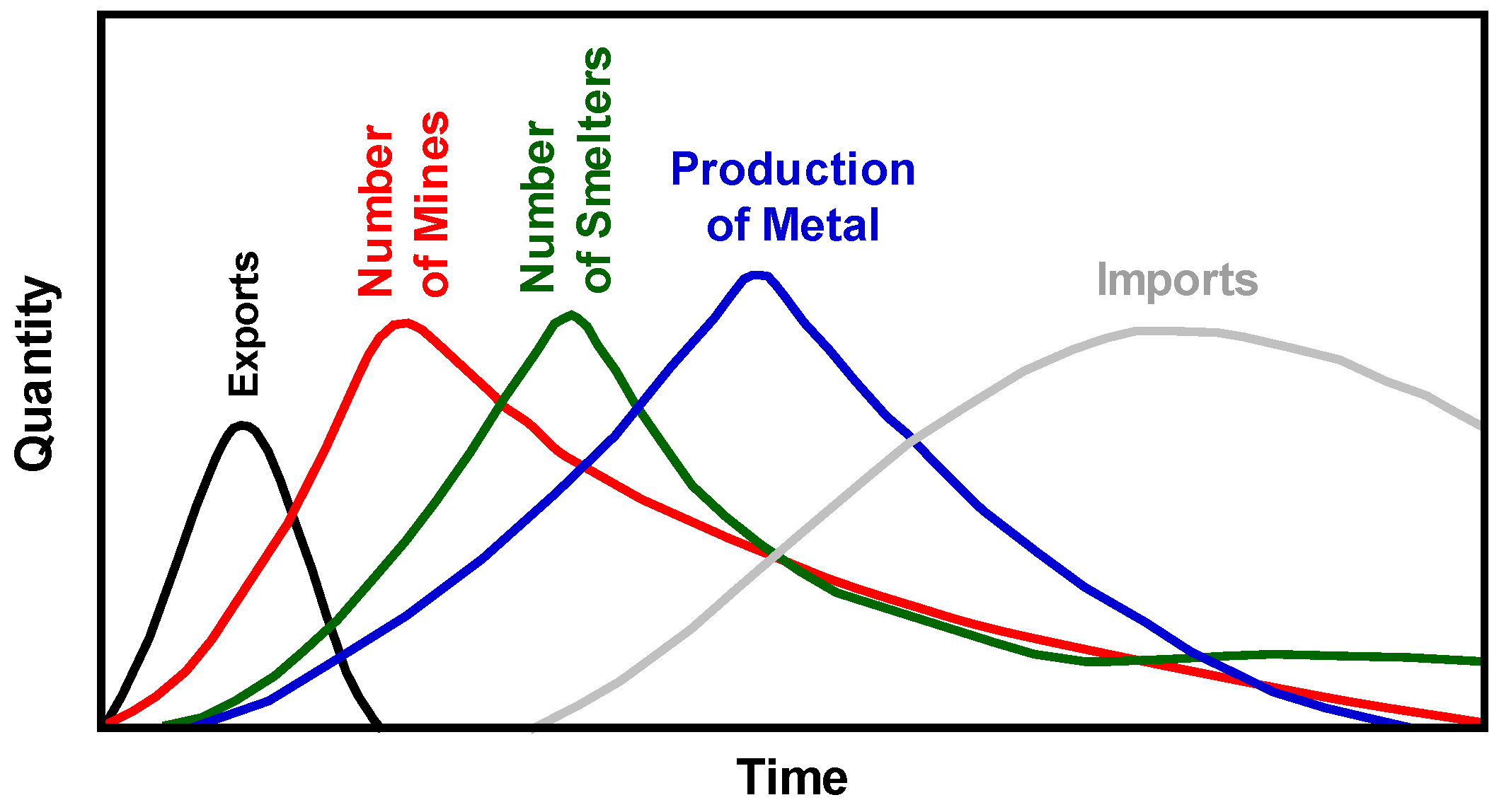
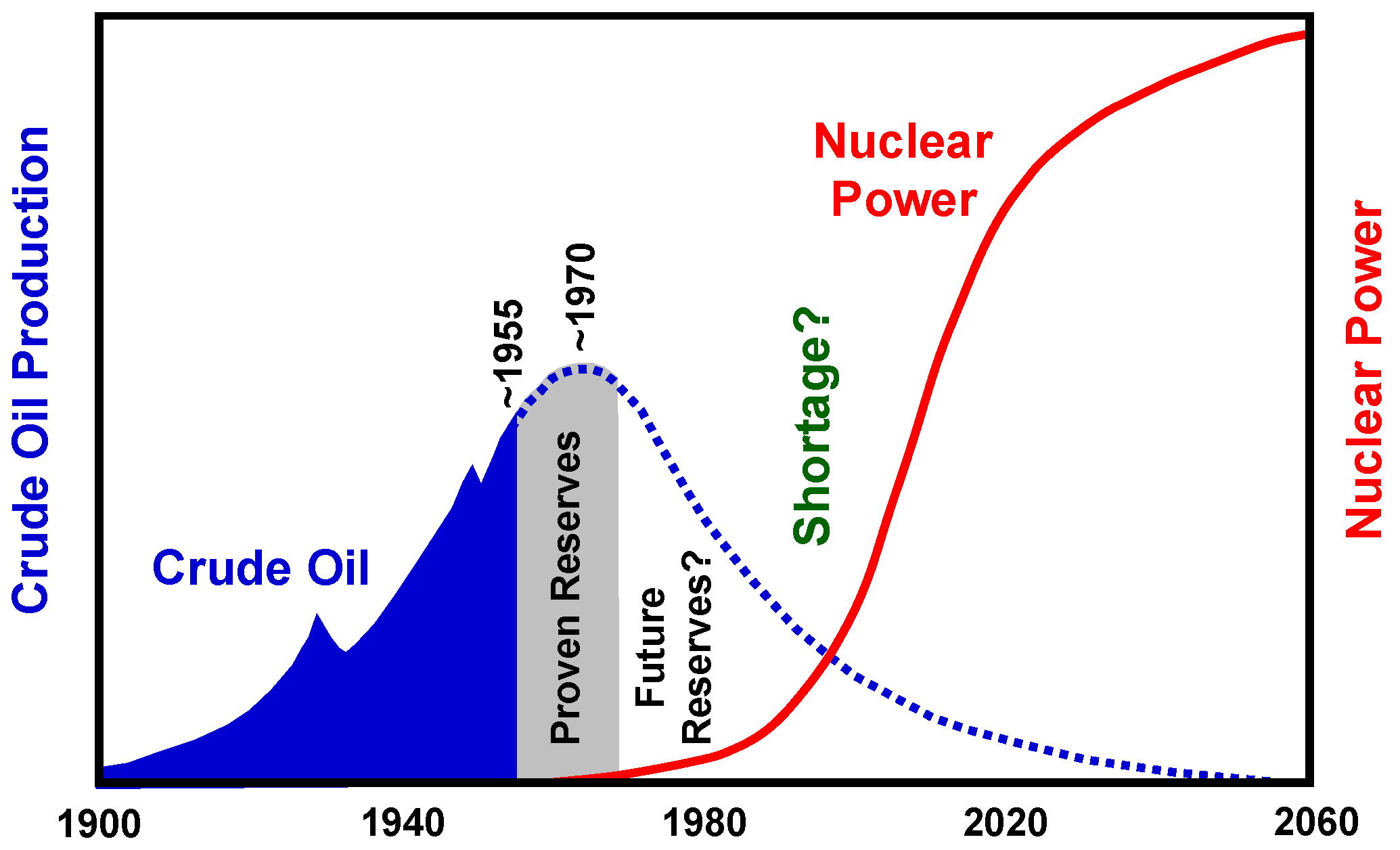
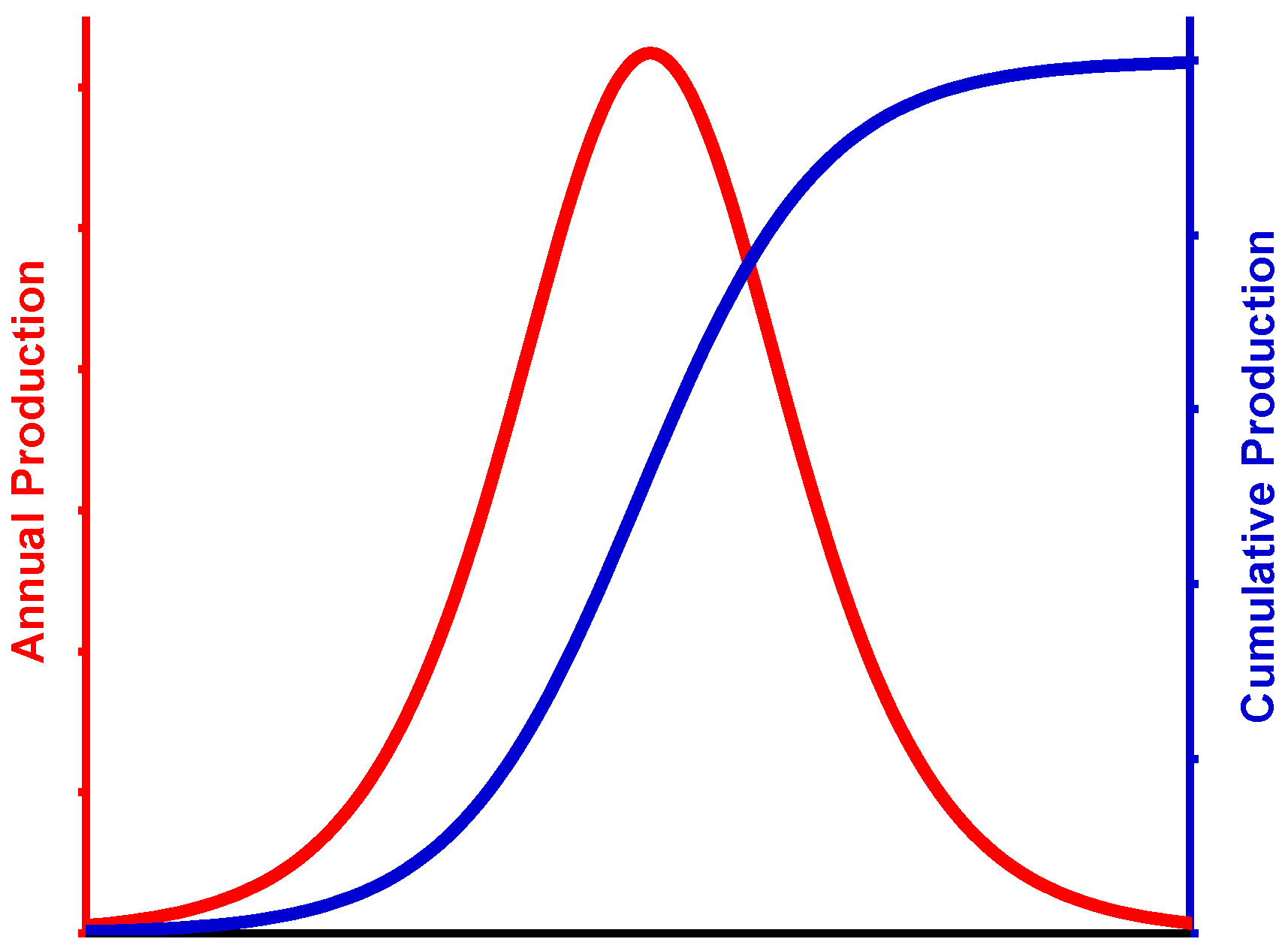

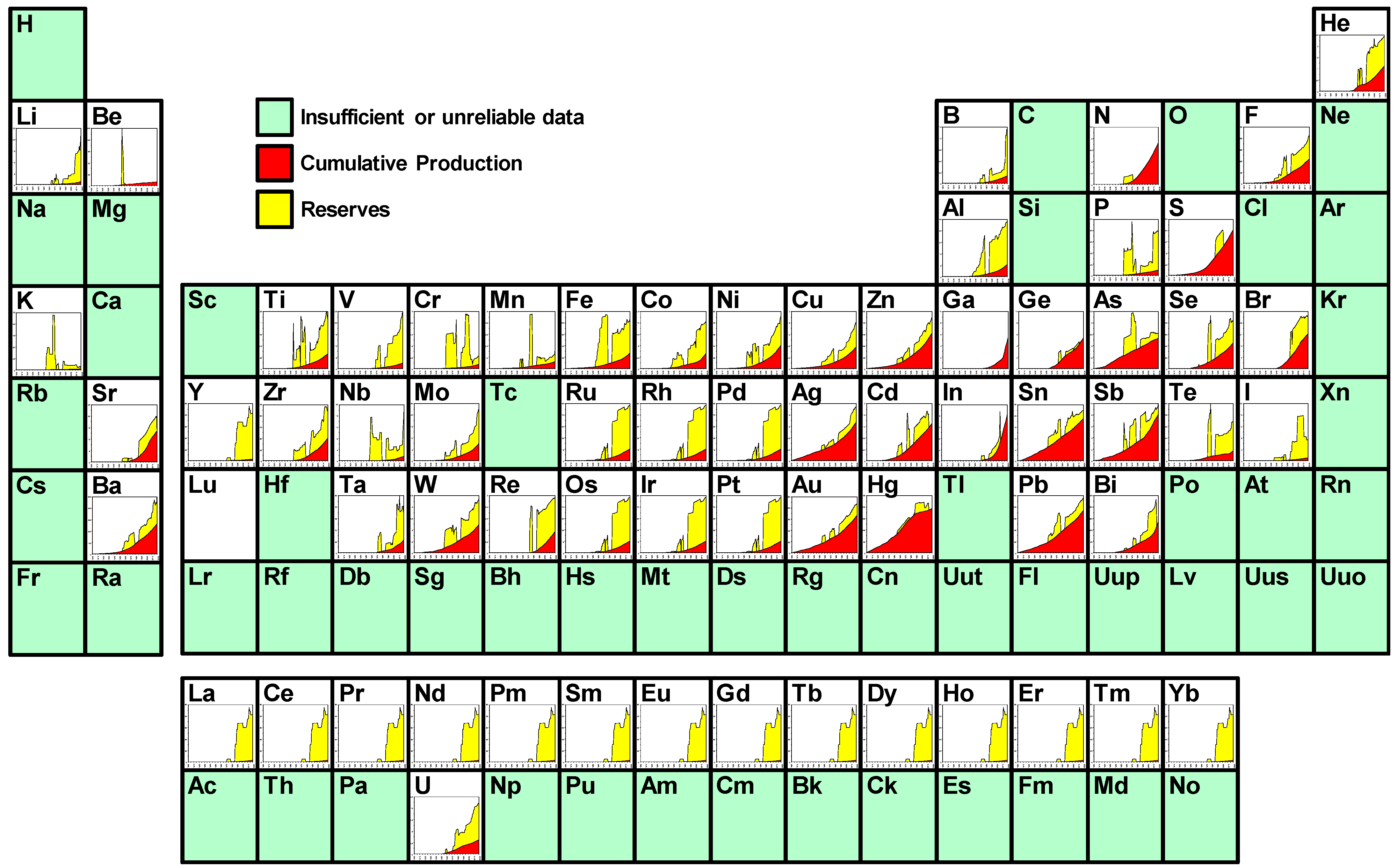
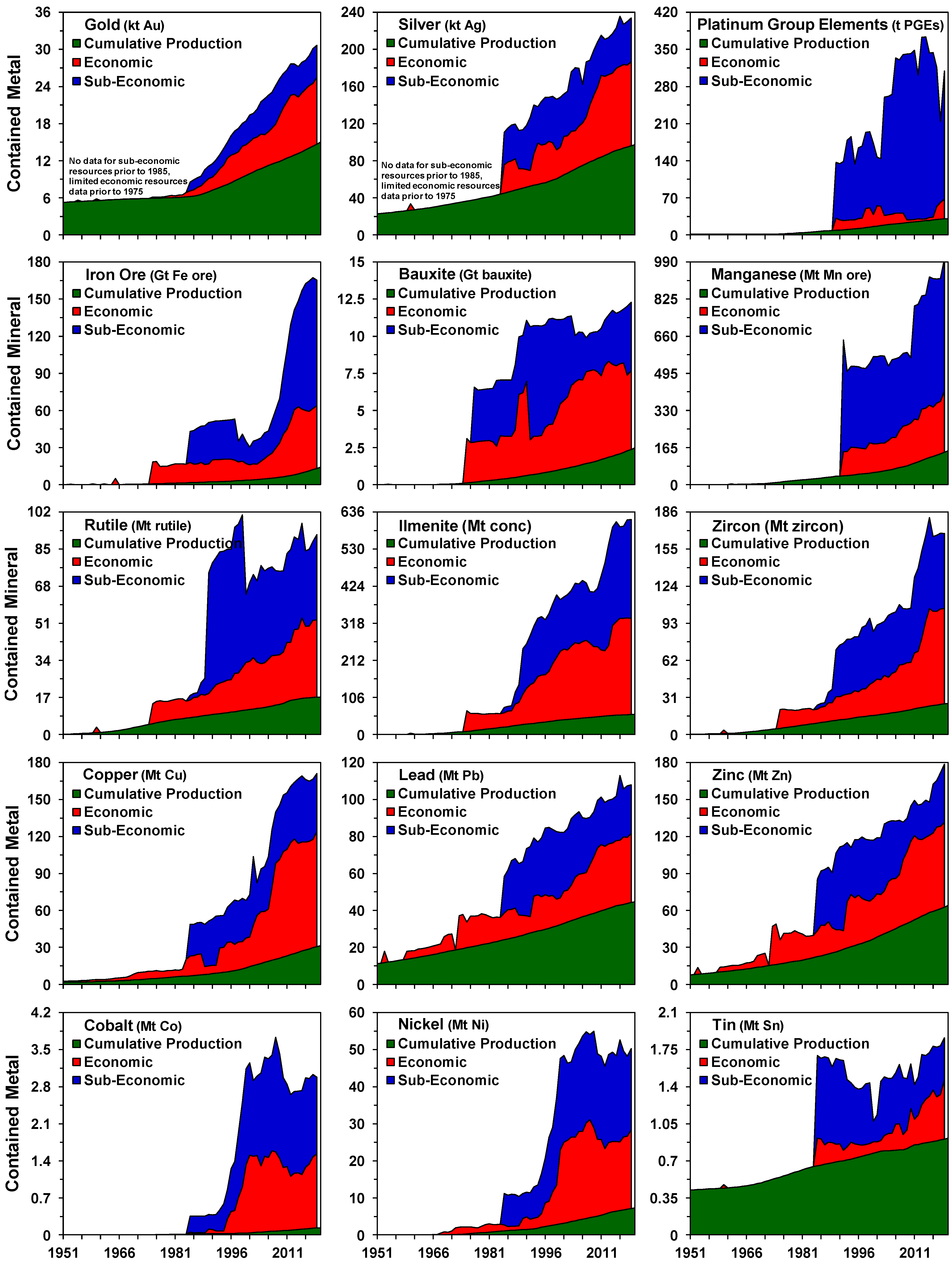
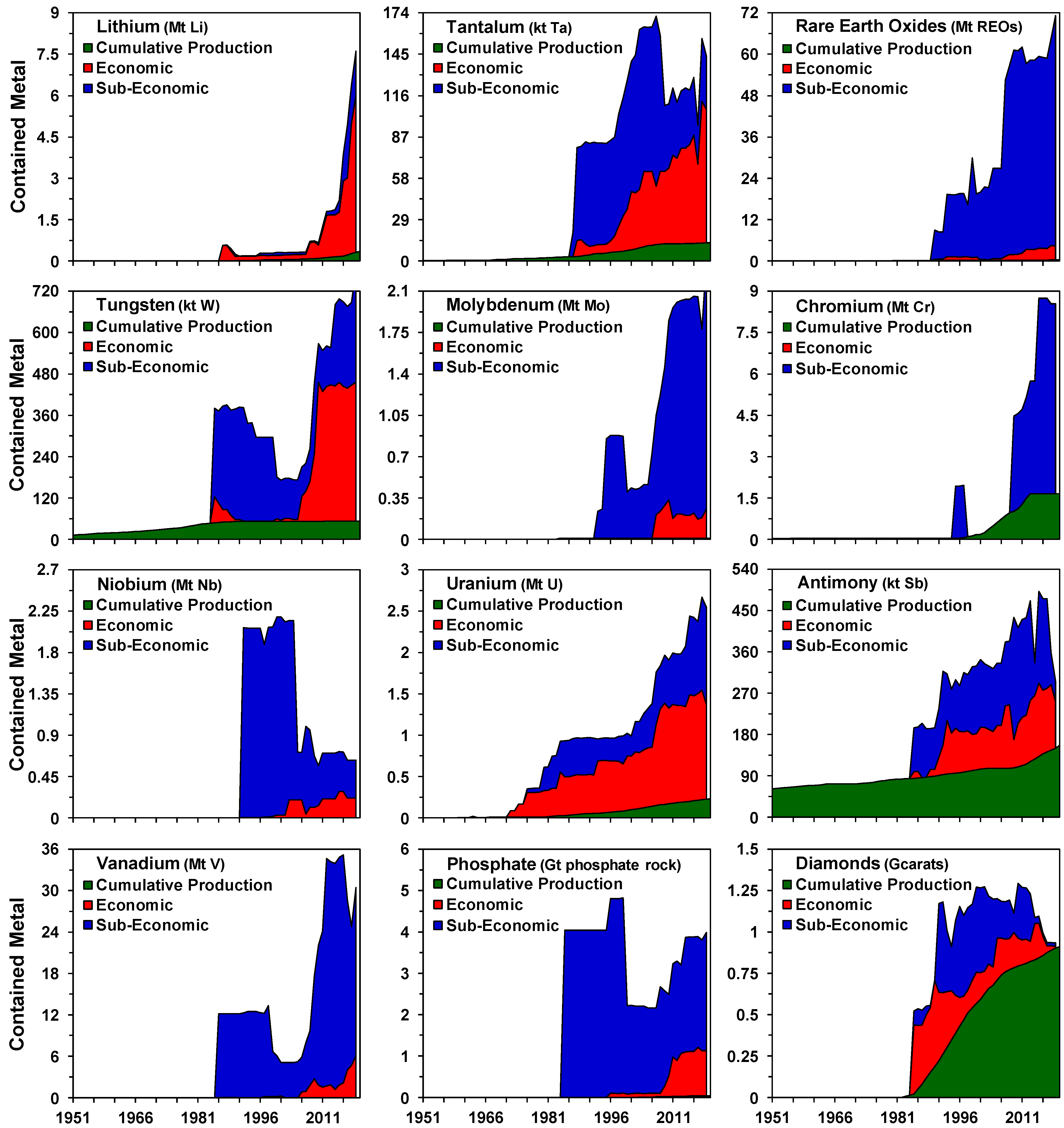
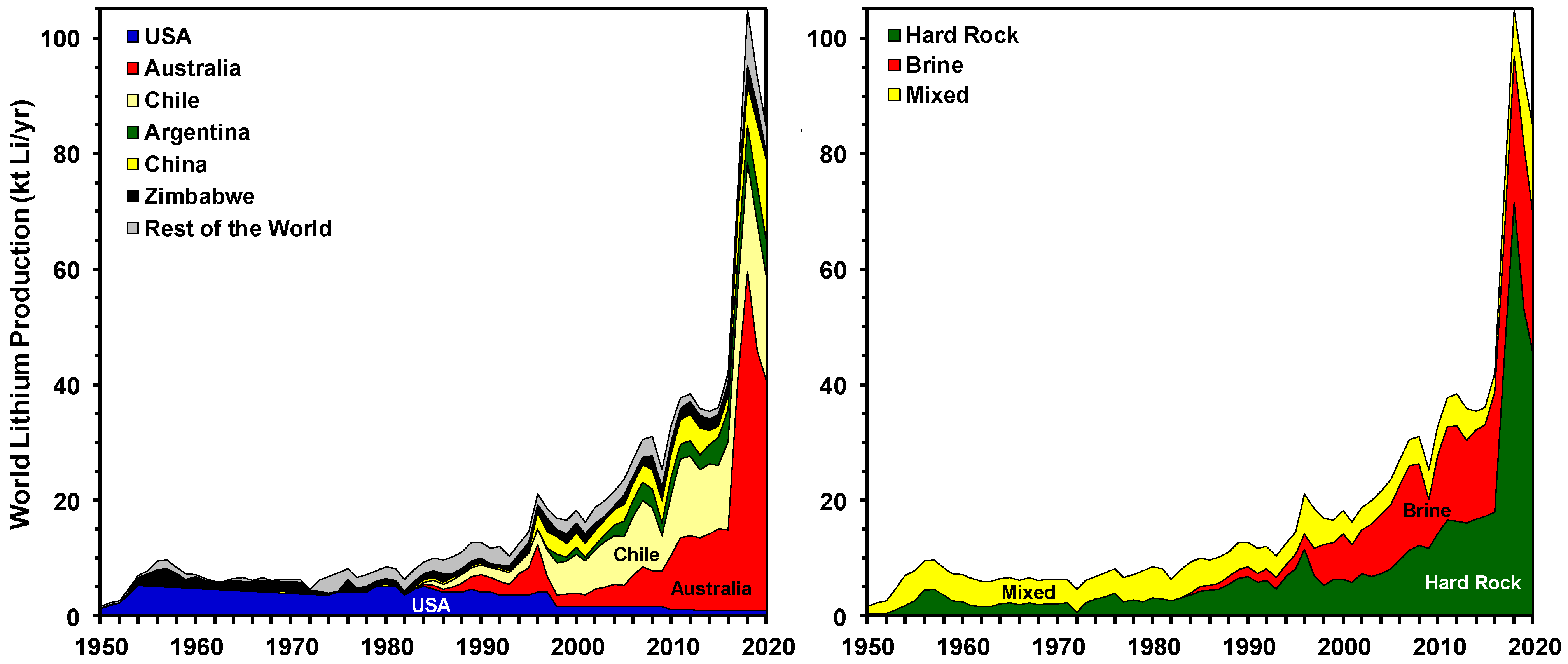
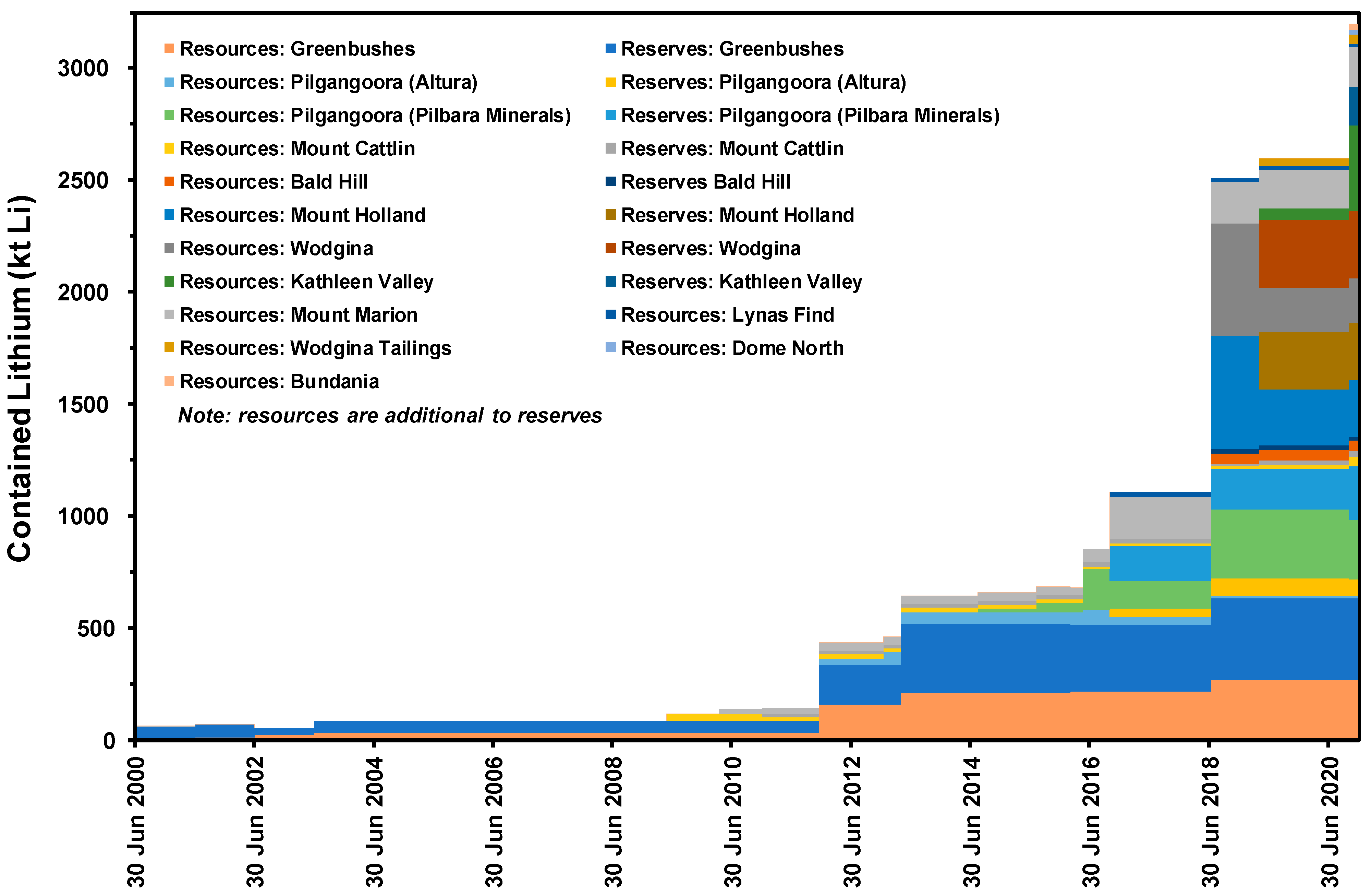
| No. | Element | Symbol | Units | World A | Leader A | Australia A | Price (USD/t) A | Sector Value (USDmill) | |
|---|---|---|---|---|---|---|---|---|---|
| World | Australia | ||||||||
| 1 | Coal | coal | Mt coal | 8834 B | 4280 China B | 418.3 C | 68.2 C | 602,778.4 | 57,959.5 |
| 2 | Iron Ore | Fe | Mt Fe ore | 2400 | 900 Australia | 900 | 108 | 259,200.0 | 97,200.0 |
| 3 | Gold | Au | t Au | 3200 | 380 China | 320 | 56,913,183 | 182,122.2 | 18,212.2 |
| 4 | Copper | Cu | Mt Cu | 20 | 5.7 Chile | 0.87 | 5952 | 119,048.4 | 5178.6 |
| 5 | Alumina | Al2O3 | Mt alumina | 136 | 74 China | 21 | 370 | 50,320.0 | 7770.0 |
| 6 | Potash | K2O | Mt K2O | 43 | 14 Canada | - | 830 | 35,690.0 | - |
| 7 | Nickel | Ni | Mt Ni | 2.5 | 0.76 Indonesia | 0.17 | 14,000 | 35,000.0 | 2380.0 |
| 8 | Zinc | Zn | Mt Zn | 12 | 4.2 China | 1.4 | 2403 | 28,836.2 | 3364.2 |
| 9 | Manganese | Mn | Mt Mn ore | 18.5 | 5.2 South Africa | 3.3 | 1073 | 19,845.5 | 3540.0 |
| 10 | Silicon | Si | Mt Si | 8.0 | 5.4 China | - | 2116 | 16,931.3 | - |
| 11 | Silver | Ag | kt Ag | 25 | 5.6 Mexico | 1.3 | 643,087 | 16,077.2 | 836.0 |
| 12 | Phosphate | PO4 | Mt PO4 rock | 223 | 90 China | 2.7 | 70 | 15,610.0 | 189.0 |
| 13 | Palladium | Pd | t Pd | 191.6 D | 82.0 Russia D | 0.31 E | 67,524,116 | 12,937.6 | 21.1 |
| 14 | Bauxite | - | Mt bauxite | 371 | 110 Australia | 110 | 27 | 10,017.0 | 2970.0 |
| 15 | Lead | Pb | Mt Pb | 4.4 | 1.9 China | 0.48 | 1980 | 8710.8 | 950.3 |
| 16 | Chromium | Cr | Mt Cr ore | 40 | 16 South Africa | - | 180 | 7200.0 | - |
| 17 | Molybdenum | Mo | kt Mo | 300 | 120 China | - | 20,000 | 6000.0 | - |
| 18 | Rhodium | Rh | t Rh | 18.9 D | 14.9 South Africa D | - | 295,819,936 | 5591.0 | - |
| 19 | Tin | Sn | kt Sn | 270 | 81 China | 6.8 | 17,416 | 4702.4 | 118.4 |
| 20 | Cobalt | Co | kt Co | 140 | 95 DRC | 5.7 | 33,069 | 4629.7 | 188.5 |
| 21 | Platinum | Pt | t Pt | 153.8 D | 100.2 South Africa D | 0.21 E | 27,331,190 | 4203.5 | 5.7 |
| 22 | Rare Earths | REO | kt REO | 240 | 140 China | 17 | 12,852 F | 3084.4 | 218.5 |
| 23 | Uranium | U | kt U | 54.7 C | 22.7 Kazakhstan C | 5.4 C | 56,103 | 3068.9 | 303.0 |
| 24 | Zircon | ZrSiO4 | Mt zircon | 1.4 | 0.48 Australia | 0.48 | 1500 | 2100.0 | 720.0 |
| 25 | Niobium | Nb | kt Nb | 78 | 71 Brazil | - | 24,000 | 1872.0 | - |
| 26 | Tungsten | W | kt W | 84 | 29 China | - | 21,409 | 1798.4 | - |
| 27 | Ilmenite | FeTiO3 | Mt ilmenite | 7.6 | 2.3 China | 0.8 | 210 | 1596.0 | 168.0 |
| 28 | Graphite | - | Mt graphite | 1.1 | 0.65 China | - | 1400 | 1540.0 | - |
| 29 | Antimony | Sb | kt Sb | 153 | 80 China | 2 | 8774 | 1342.5 | 17.5 |
| 30 | Vanadium | V | kt V | 86 | 53 China | - | 14,771 | 1270.3 | - |
| 31 | Lithium | Li | kt Li | 82 | 40 Australia | 40 | 9612 | 788.2 | 384.5 |
| 32 | Rutile | TiO2 | kt rutile | 630 | 200 Australia | 200 | 1200 | 756.0 | 240.0 |
| 33 | Iridium | Ir | t Ir | 7.4 D | nd South Africa D | - | 51,446,945 | 380.7 | - |
| 34 | Indium | In | t In | 900 | 500 China | - | 400,000 | 360.0 | - |
| 35 | Garnet | - | Mt garnet | 1.1 | 0.36 Australia | 0.36 | 270 | 297.0 | 97.2 |
| 36 | Ruthenium | Ru | t Ru | 30.5 D | nd South Africa D | - | 8360,129 | 255.0 | - |
| 37 | Tantalum | Ta | t Ta | 1700 | 670 DRC | 30 | 129,390 | 220.0 | 3.9 |
| 38 | Gallium | Ga | t Ga | 300 | 290 China | - | 570,000 | 171.0 | - |
| 39 | Germanium | Ge | t Ge | 130 | 86 China | - | 1,000,000 | 130.0 | - |
| 40 | Selenium | Se | kt Se | 2.9 | 1.1 China | - | 44,092 | 127.9 | - |
| 41 | Bismuth | Bi | kt Bi | 17 | 14 China | - | 5952 | 101.2 | - |
| 42 | Scandium | Sc | t Sc | 15 | 1.1 Philippines G | - | 6164,290 G | 92.5 | - |
| 43 | Rhenium | Re | t Re | 53 | 30 China | - | 1,000,000 | 53.0 | - |
| 44 | Cadmium | Cd | kt Cd | 23 | 8.2 China | nd | 2300 | 52.9 | nd |
| 45 | Tellurium | Te | t Te | 490 | 300 China | - | 55,000 | 27.0 | - |
| 46 | Strontium | Sr | kt Sr | 210 | 86 Spain | - | 66 | 13.9 | - |
Publisher’s Note: MDPI stays neutral with regard to jurisdictional claims in published maps and institutional affiliations. |
© 2021 by the author. Licensee MDPI, Basel, Switzerland. This article is an open access article distributed under the terms and conditions of the Creative Commons Attribution (CC BY) license (https://creativecommons.org/licenses/by/4.0/).
Share and Cite
Mudd, G.M. Assessing the Availability of Global Metals and Minerals for the Sustainable Century: From Aluminium to Zirconium. Sustainability 2021, 13, 10855. https://doi.org/10.3390/su131910855
Mudd GM. Assessing the Availability of Global Metals and Minerals for the Sustainable Century: From Aluminium to Zirconium. Sustainability. 2021; 13(19):10855. https://doi.org/10.3390/su131910855
Chicago/Turabian StyleMudd, Gavin M. 2021. "Assessing the Availability of Global Metals and Minerals for the Sustainable Century: From Aluminium to Zirconium" Sustainability 13, no. 19: 10855. https://doi.org/10.3390/su131910855
APA StyleMudd, G. M. (2021). Assessing the Availability of Global Metals and Minerals for the Sustainable Century: From Aluminium to Zirconium. Sustainability, 13(19), 10855. https://doi.org/10.3390/su131910855






